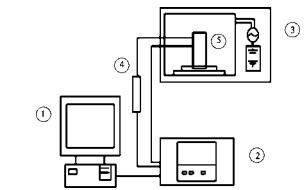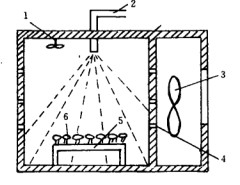Optimization of microwave-hot air combined drying process for red shrimp and shrimp
The red shrimp and shrimp were used as the research object. The single microwave or hot air drying was used as the control. The comprehensive value based on the rehydration ratio of dry shrimp, the surface chroma before and after rehydration, and the hardness, elasticity and chewiness after rehydration were used as products. Process indicators, research microwave-hot air combined drying process.
On the basis of single factor, the microwave power, hot air drying temperature and conversion point moisture content are selected as independent variables, and the comprehensive value is determined as the response value to determine the optimal drying process conditions: 250 W microwave drying equipment, the conversion point moisture content is 50 %, and then dried at 70 °C hot air.
Under this condition, the comprehensive value of dried shrimp and shrimp products is 45.32, which is higher than the comprehensive value of any group of dried shrimp and shrimp products, indicating that the process parameters obtained by orthogonal optimization have practical guiding significance. The internal structure of the dried shrimp product was observed by an electron microscope, again illustrating that the combined drying is superior to the single drying method.
Key words: shrimp microwave drying; hot air drying; joint drying
Red shrimp (Solenocera melantho), the scientific name of Chinese tuber shrimp, annual benthic crustacean. Shrimp is rich in essential amino acids, unsaturated fatty acids and vitamins, and has a very high nutritional value. At the same time, dried shrimp products are popular among consumers because of their rich nutrition, unique flavor, storage and convenience.

Dry production is one of the important methods of processing aquatic products, but there are various shortcomings in single drying processing:
(1) Natural drying is vulnerable to dust, insects and other pollution and attack by birds and rodents, resulting in loss and unsanitary;
(2) The hot air drying time is long, the energy consumption is high, and the quality of the product is also lowered;
(3) Freeze-drying can bring high product quality, but due to long production cycle, it leads to high processing cost, low production efficiency and high energy consumption.
(4) Heat pump drying in the middle and late stages of drying, slow drying speed, long drying time, intermittent work, small drying scale, can not achieve continuous material operation, it is difficult to achieve mass production.
The use of combined drying usually solves the shortcomings of a single drying method.
Combined drying refers to a compound drying technique in which two or more drying modes are complementary and phased according to the characteristics of the material. Such as: microwave-hot air combined drying, hot air-freezing combined drying and hot air-microwave-freezing combined drying. Nowadays, joint drying has been studied in fruits and vegetables such as red dates, lychee and snow lotus [6-8] and tilapia, squid and large yellow croaker. Most joint drying features fast speed and short time. The products are cost-effective and can complement each other, avoiding the disadvantages of a single drying method. Due to the phenomenon of skin hardening due to hot air drying, it is not conducive to internal water discharge. The test uses a combined drying method of microwave and hot air.